
Interior
There are two means of accessing the Project S's guts. The first is by undoing the four nuts that hold the tempered glass panel in place and lifting it off. This is useful for quick access like if you need to clean the two aforementioned internal dust filters, or switch out or upgrade certain components once your build is finished. However, this method gives you no access to the rear of the motherboard tray; for that, you'll need to utilise the drawer mechanism.The drawer is secured with four thumbscrews at the back. With these removed, the wheels make getting the case out very easy. You can then work on your PC with the drawer kept horizontal, applying the wheel brakes to keep it in place, or stand it up and work as if it were a normal tower case, finally giving you easy access to both the front and rear of the motherboard tray.
The use of a drawer design does come with a drawback worth taking note of – you need a lot of desk room to get it all the way out. The case is 460mm deep, so even a desk with 1m of depth could feel pretty tight. It's certainly a cool feature, as the photos will attest to, but for many users it's not a practical one. If you're going the vertical route, you could utilise a corner desk to give you the extra room needed, or simply transfer the entire case to the floor or a table whenever major work is needed.
A quick examination of the interior reveals a few things. Firstly, Nanoxia has not opted for any tool-free designs, nor are there any pre-installed motherboard standoffs. This isn't a chassis designed for novices, although that's not to say it's difficult to work with. We also found that there's no header for extra RGB connectivity, which is a shame – it would have been great if you could hook up extra third-party RGB LED strips and control them via the front panel.
With plenty of space, getting the motherboard in is easy. The same is true of the PSU, and we like that your unit is decoupled from the rear of the case via foam padding, although on our sample the foam was slightly misaligned with one of the external screw holes. Adding to this, you also get some rubber standoffs that you stick on yourself to isolate it from the motherboard tray.
On the left side of the case (or what would be the floor in a normal tower), is a drive cage capable of housing a pair of 3.5in or 2.5in drives, with the former being decoupled via rubber mounts. The entire cage can be removed to make way for water-cooling gear, although do bear in mind that this is the only area that can house 3.5in devices.
There are also three dedicated 2.5in mounting trays towards the front, and again these are removable. All drives installed in the Project S are done so vertically and as such will have their cable connection points facing the motherboard tray where there are cutouts for each of them, meaning you can connect them while keeping their cables all but invisible.
Other cables are pretty easy to tidy away as well, thanks to ample use of large routing holes covered with easy-to-use rubber grommets. Keeping the case cables all in black is sensible and there's also loads of space on the underside of the motherboard tray, numerous anchor points and a healthy amount of zip ties supplied. In addition, there's a few Velcro cable ties to make your life easier. These aren't as good as other implementations we've seen, as we'd prefer them to be fixed to the case instead of loose, but they're helpful nonetheless – you definitely want to ensure all cables are well strapped down to prevent them dragging and potentially disconnecting when you close the drawer or open it again. Building in the Project S is a bit lengthier than usual but not overly so and, besides, this is a case worth spending some time with as the end result is really worth it.
There are two main areas you can use for water-cooling hardware. First up is the front section and to use this you'll have to remove the aluminium front panel, which isn't the easiest of tasks. It involves undoing six internal screws, and you may also want to detach the front panel ports if you don't want to drag all of the I/O cables with you when doing this. Once it's off, however, you can fit 240mm or 280mm radiators here. The manual says you have 95mm to play with between the front of the case and the SSD trays, but by our measurements it's closer to just over 80mm – we don't think a full thickness radiator is supported without removing the appropriate SSD trays, but a slimline radiator with fans on either side is a possibility.
The side areas are much easier to work with as you have full access to these as soon as the case is out of its enclosure. On the right side, you can install radiators up to 360mm in size. There's only 60mm of clearance here until you cross into the motherboard area, so it'll be single-fan slimline setups only. Support on the left side is limited to 120mm radiators.

MSI MPG Velox 100R Chassis Review
October 14 2021 | 15:04

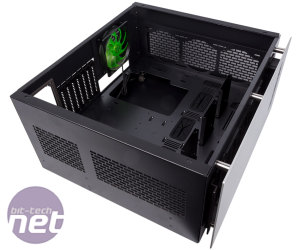
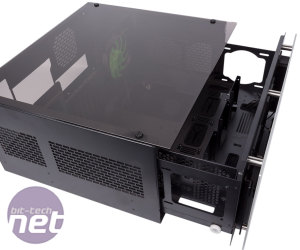
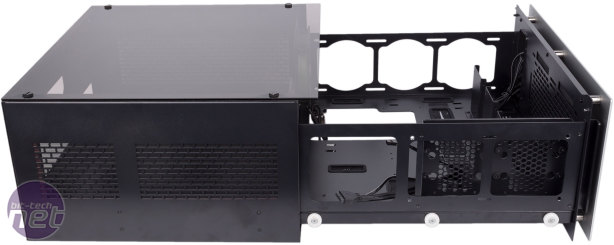
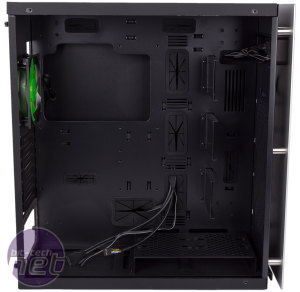

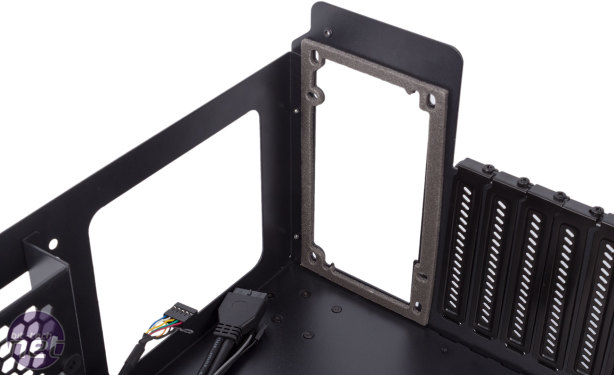
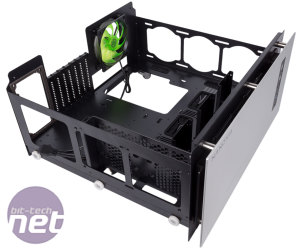
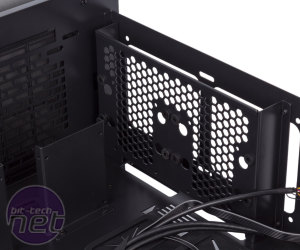
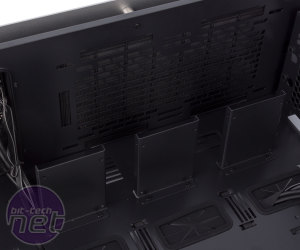
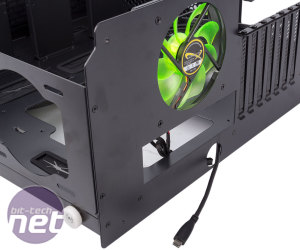
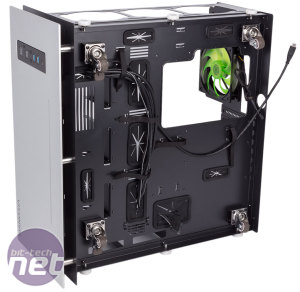
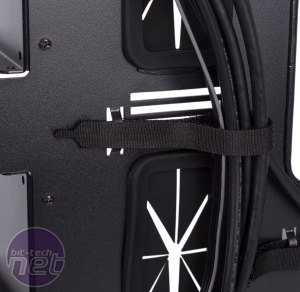
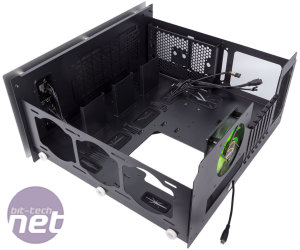
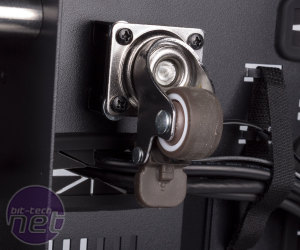
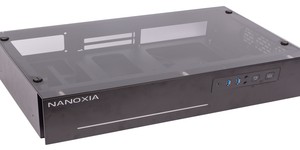






Want to comment? Please log in.